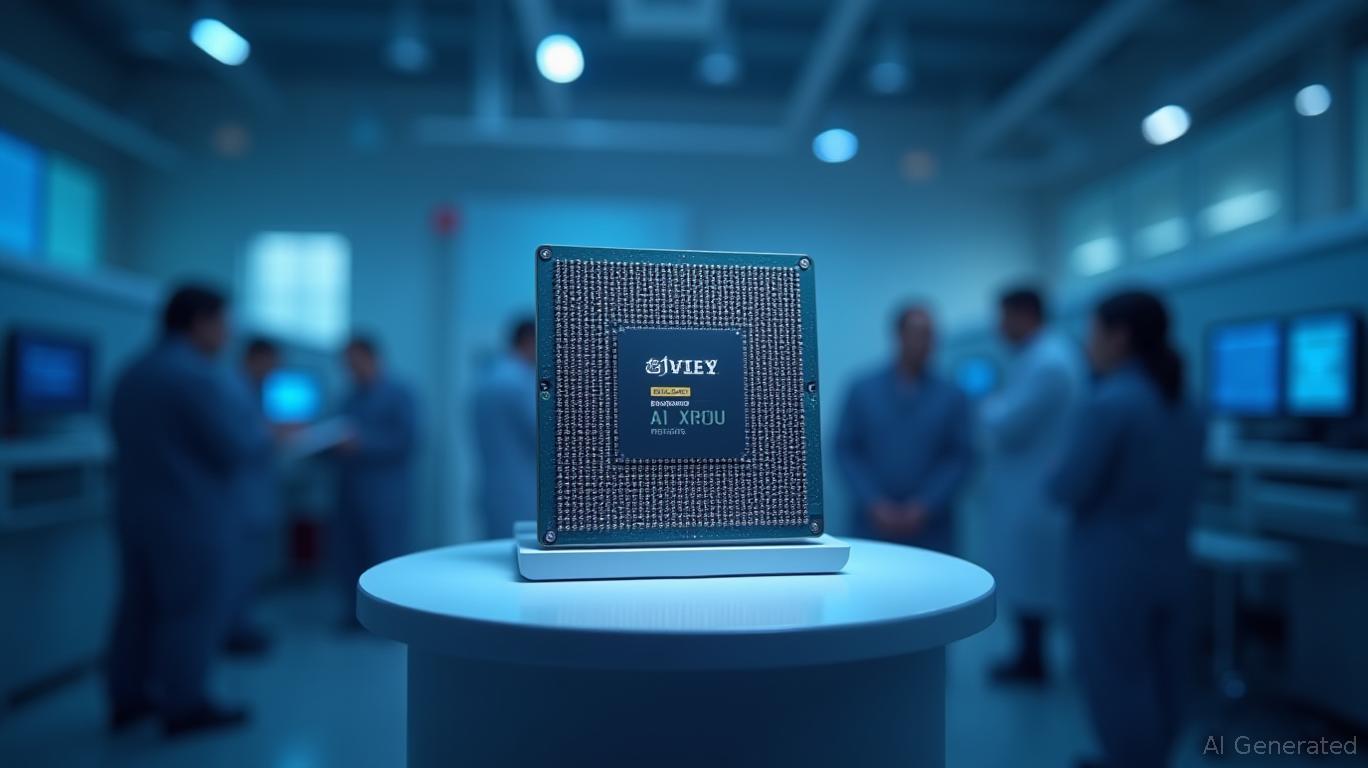Broadcom's AI-Driven Surge: Is AVGO's Growth Sustaining Its Valuation?
Broadcom (AVGO) has emerged as a standout player in the tech sector, fueled by its dominance in AI semiconductors and infrastructure software. With its latest earnings report revealing record revenue and robust free cash flow, the question remains: Is the stock undervalued, or have investors already priced in its growth potential? Let's dissect the data.
Financial Performance: Riding the AI Wave
Broadcom's Q2 FY2025 results underscore its position as a leader in the AI hardware revolution. Revenue hit $15.0 billion, a 20% year-over-year jump, driven by a 46% surge in AI semiconductor revenue to $4.4 billion. The AI segment now accounts for 30% of total sales, with networking AI revenue skyrocketing 170% YoY.
The infrastructure software segment also thrived, growing 25% YoY to $6.6 billion, bolstered by VMware's performance post-acquisition. Free cash flow hit a record $6.4 billion (43% of revenue), while net income surged 134% to $4.9 billion. Broadcom's balance sheet remains robust, with $9.5 billion in cash and a shareholder-friendly stance—$7.0 billion returned via dividends and buybacks in Q2 alone.
Analyst Sentiment: Bullish, but with Nuance
Post-earnings, analysts remain largely bullish, though risks linger.
upgraded its price target to $276 (11% upside), citing AI's 30% contribution to sales and the potential for non-AI segments to offset margin pressures. The Zacks consensus reflects a “Strong Buy” with an average price target of $256—2.9% above recent levels.However, margin concerns persist. Zacks warned that Q3's gross margin could dip 130 basis points as lower-margin AI XPUs (accelerators) dominate production. This aligns with Broadcom's guidance: Q3 revenue of $15.8 billion (+21% YoY) hinges on AI revenue hitting $5.1 billion—up 60% YoY—while non-AI segments face headwinds like weak server storage demand.
Market Positioning: Outperforming Peers Amid Sector Volatility
Broadcom has outpaced peers in 2025. Its stock rose 5.2% YTD, outperforming the Zacks Electronics Semiconductors sector (3% gain) and the broader tech sector (1.8% rise). Competitors like AMD (0.6% YTD) and Marvell (-37% YTD) trail, underscoring Broadcom's AI-driven moat.

The company's partnerships with AI giants like NVIDIA, Alphabet, and Meta are critical. These collaborations ensure steady demand for its networking and compute chips, which are integral to data centers and large language models.
Risks to Consider
While the long-term outlook is bright, near-term challenges loom:
1. Margin Pressure: The shift to AI XPUs could strain gross margins until higher-margin segments rebound.
2. Sector Softness: Sluggish demand in non-AI markets (e.g., industrial, wireless) may weigh on growth.
3. Valuation Stretch: At 28x forward P/E,
Investment Takeaway: Buy the Dip, but Mind the Risks
Broadcom's valuation is rich, but its AI tailwinds justify optimism. The stock's price targets suggest investors expect sustained growth, and its dividend yield (1.3%) adds a safety net. However, traders should avoid overpaying—consider entering on dips or waiting for margin pressures to ease.
Historically, a short-term strategy of buying AVGO on earnings announcement days and holding for 20 trading days from 2020 to 2025 underperformed the market, yielding an average annual return of 3% versus a 109.95% benchmark return. This approach faced significant volatility, including a maximum drawdown of 28.58%, underscoring the risks of timing the stock around earnings. These results suggest that investors are better served by a long-term holding strategy, focusing on Broadcom's AI-driven growth rather than short-term fluctuations.
Final Verdict: Hold for long-term investors; accumulate on weakness below $240. Short-term traders may want to wait for clearer signs of margin stabilization. Broadcom's AI leadership is undeniable, but volatility in tech markets demands patience.
Jeanna Smialek's analysis emphasizes the balance between growth and valuation, urging investors to weigh Broadcom's strategic advantages against near-term execution risks.
Sign up for free to continue reading
By continuing, I agree to the
Market Data Terms of Service and Privacy Statement

Comments
No comments yet